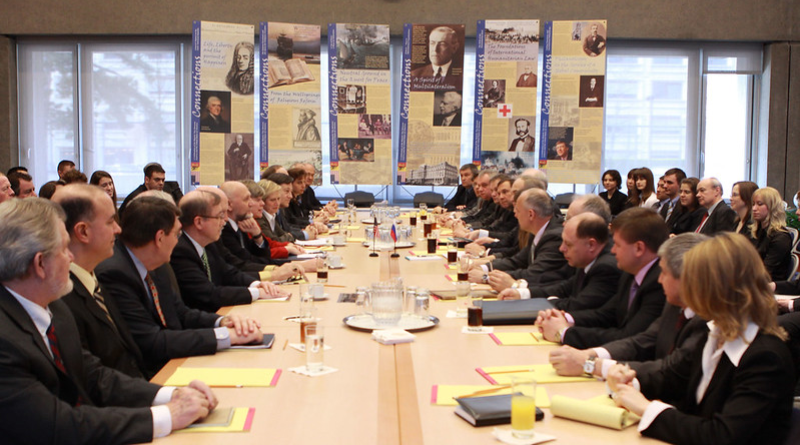
The New START Treaty, the current arms control agreement between the United States and Russia, is set to expire on February 4, 2026. The United States has indicated its readiness to renew negotiations with Russia on strategic risk reduction and work out a subsequent arms control agreement to replace the treaty. That marks one of the attempts by the United States to follow up on the proposals put forth by National Security Adviser Jake Sullivan in his speech at the Arms Control Association on June 2, 2023, and reinvigorate the currently frozen U.S.-Russia strategic dialogue. This approach seems to echo the attitude of “compartmentalization” practiced during the détente period of the Cold War, which de-linked arms control from other bilateral issues between the United States and the Soviet Union, including conflicts around the world.
However, “compartmentalization” is not welcomed in Moscow. Russia is generally skeptical of whether Cold War methods can be effective in the present moment. In late November 2022, Russia postponed the Bilateral Consultative Commission meeting under the New START Treaty, the only existing nuclear arms reduction accord. The meeting was scheduled to be held in Cairo, Egypt. In answering why Russia postponed the meeting, Deputy Minister of Foreign Affairs Sergei Ryabkov remarked that “bigger questions dominate the U.S.-Russian agenda than mere technicalities of the treaty.”
A few months later, in a speech to the Federal Assembly, Putin announced that Russia would suspend its participation in the treaty, ceasing to provide notifications and allow annual inspections, as “the West is trying to inflict a strategic defeat of Russia.” The Russian Ministry of Foreign Affairs statement went further, claiming that “it is no longer possible to separate arms control from geopolitical or military-strategic realities and that the only way to restore the New START Treaty is for Washington to abandon its hostile course of action.”
Thus the Russian authorities are linking issues of strategic stability and the war in Ukraine, refusing to separate arms control from the adversarial geopolitical context. The American proposals are therefore likely to be neglected for now, though some of the suggestions, including a proposal to negotiate a P5 pre-launch notification regime for ballistic missiles, might advance Moscow’s aspirations to include France and the United Kingdom in the arms control negotiations.
According to Tatiana Stanovaya, a senior fellow at the Carnegie Russia Eurasia Center in Berlin, the timing and context of the offer play an essential role in Russia’s position. The Kremlin believes that 2024 will be more favorable for negotiations. The support for Ukraine might fade, the West might bog down in internal disputes, and finally, presidential elections in the United States might radically alter the circumstances. Therefore, the Russian response is muted at best, though it would have been positive otherwise, considering that Russia tried unsuccessfully to extend the treaty during the Trump administration.
However, there is not much unanimity in the United States either. Hawks in the Senate demand invalidating the remaining elements of arms control architecture by withdrawing from the Nuclear Test Ban Treaty and enhancing national nuclear potential against the backdrop of a two-front confrontation with Russia and China. In addition, the bipartisan Congressional Strategic Posture Commission recommended that the United States should accelerate its nuclear modernization and not restrain itself by the deployment limits of the treaty. The Biden administration acknowledges these differences but nonetheless believes that a new pact should supplant New START.
Regardless of when negotiations on the subsequent arms control treaty start, the talks will take considerable time. If they require more time than the cutoff date of the treaty allows, then the United States and Russia should agree on a joint statement to extend their obligations in the interim period and to reaffirm that both parties will not take any action inconsistent with New START while talks are being conducted. There was a similar precedent set when the SALT I expired in October 1977 while the SALT II was still in negotiation. That was a prudent move, as it took 20 more months to finalize the SALT II agreement in June 1979. The same result can be achieved again if both parties decide to do so.